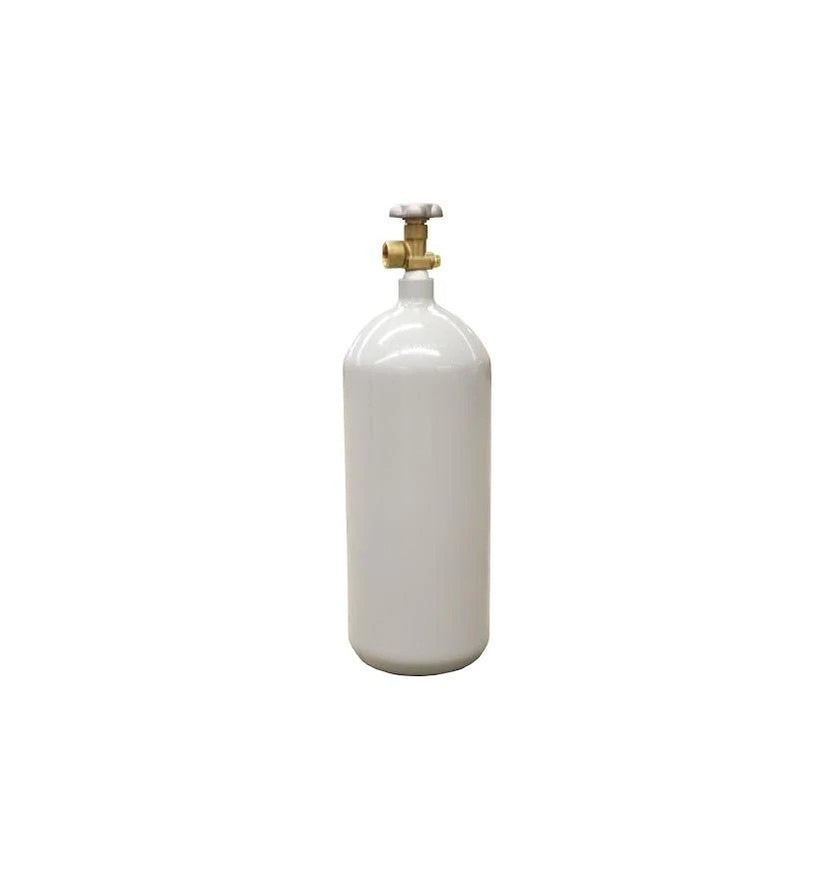Welding aluminum requires a precise and thoughtful approach, and one critical factor in achieving optimal results is selecting the welding gas cylinder. The choice of gas can significantly impact the quality of the weld, affecting factors such as penetration, bead appearance, and overall performance. In this comprehensive guide, we will delve into the nuances of welding aluminum and explore the considerations for selecting the ideal welding gas. Whether you're a seasoned welder or just starting, understanding the role of gas in aluminum welding is essential for achieving high-quality results.
Understanding the Basics of Aluminum Welding:
Aluminum is a versatile and lightweight metal commonly used in various industries, from automotive to aerospace. While aluminum offers excellent properties for specific applications, it presents unique challenges when it comes to welding. Unlike steel, aluminum has a higher thermal conductivity and a lower melting point, making it more susceptible to heat-related issues during welding.
To overcome these challenges and achieve successful aluminum welds, selecting the appropriate welding gas is crucial. The two primary gases used for aluminum welding are argon and helium, often used individually or in a mix known as a shielding gas.
Pure Argon:
- Argon is a commonly used shielding gas for aluminum welding. Its inert nature helps protect the weld from atmospheric contamination and minimizes the formation of oxides on the aluminum surface. Pure argon is particularly suitable for thinner aluminum materials.
Helium:
- Helium, with its higher thermal conductivity, is another option for aluminum welding. It provides better heat penetration, making it suitable for thicker aluminum sections. However, using pure helium can result in a broader and less controlled arc, making it less common as a standalone gas for aluminum welding.
Argon-Helium Mixtures:
- Combining argon and helium in various ratios allows welders to achieve a balance between good arc stability and improved welding gas tank heat penetration. Standard mixtures include 75% argon and 25% helium or 50% argon and 50% helium, depending on the specific requirements of the welding project.
Considerations for Selecting the Ideal Welding Gas:
Now that we've covered the primary gases used in aluminum welding let's explore the key considerations that will help you select the ideal welding gas for your specific needs.
Material Thickness:
- The thickness of the aluminum material plays a crucial role in determining the suitable welding gas. For thinner materials, pure argon is often sufficient, providing the necessary shielding without excessive heat. Thicker materials may benefit from helium or argon-helium mixtures for enhanced heat penetration.
Welding Process:
- Different welding processes, such as MIG (Metal Inert Gas) or TIG (Tungsten Inert Gas), may have specific gas requirements. While pure argon is commonly used for MIG welding of aluminum, TIG welding often benefits from argon-helium mixtures for better control and heat distribution.
Joint Design and Position:
- Consider the joint design and welding position when selecting a welding gas. Some gases may perform better in certain positions or with specific joint configurations. Experimenting with different gas options based on the project's requirements can achieve optimal results.
Budget Constraints:
- While achieving the best possible weld is the ultimate goal, budget constraints may also influence your choice of welding gas. Pure argon is often more cost-effective than helium, and argon-helium mixtures provide a good balance between performance and affordability.
Weld Appearance:
- The appearance of the weld bead is an essential factor, especially in applications where aesthetics matter. Experimenting with different gas mixtures can help achieve the desired weld appearance, taking into account factors such as color and bead shape.
Availability:
- Consider the availability of gases in your region. While argon is widely accessible and commonly used, helium may be less readily available or more expensive. Checking with your local welding supply store or shop can help you determine the practicality of using specific gases for your aluminum welding projects.
Tips for Optimizing Your Aluminum Welding Experience:
In addition to selecting the suitable welding gas, optimizing your aluminum welding experience involves considering various factors and implementing best practices.
Cleanliness is Key:
- Ensure that the aluminum surfaces are clean and free from contaminants such as oil, grease, or oxides. Proper cleaning helps maintain the integrity of the weld and minimizes the risk of defects.
Proper Gas Flow and Coverage:
- Pay attention to the gas flow rate and coverage. Insufficient shielding gas can lead to weld contamination, while excessive gas flow may result in turbulence. Adjust the flow rate according to the welding parameters and project requirements.
Electrode Selection:
- Choose the appropriate electrode for aluminum welding. Tungsten electrodes with a pure or zirconiated tungsten composition are commonly used for TIG welding, while for MIG welding, aluminum-specific wire, and appropriate wire feed settings are essential.
Preheat for Thick Materials:
- When working with thicker aluminum sections, preheating the material can help welding tanks reduce the risk of cracking. Preheating is particularly beneficial when using pure argon, which may provide less heat compared to helium or argon-helium mixtures.
Experiment and Test:
- Aluminum welding often involves a degree of experimentation. Test different gas combinations, electrode types, and welding parameters on scrap material before tackling the actual project. This allows you to fine-tune your approach and achieve optimal results.
Conclusion:
Selecting the ideal welding gas for aluminum welding is a nuanced process that requires careful consideration of various factors. Whether you choose pure argon, helium, or an argon-helium mixture, understanding the properties of each gas and how they interact with aluminum is essential for achieving high-quality welds.
As you navigate the world of welding gases and aluminum welding, remember to factor in material thickness, welding process, joint design, budget constraints, weld appearance, and gas availability. Additionally, optimizing your welding experience involves cleanliness, proper gas flow, electrode selection, preheating when necessary, and a willingness to experiment and test different approaches.


No comments yet